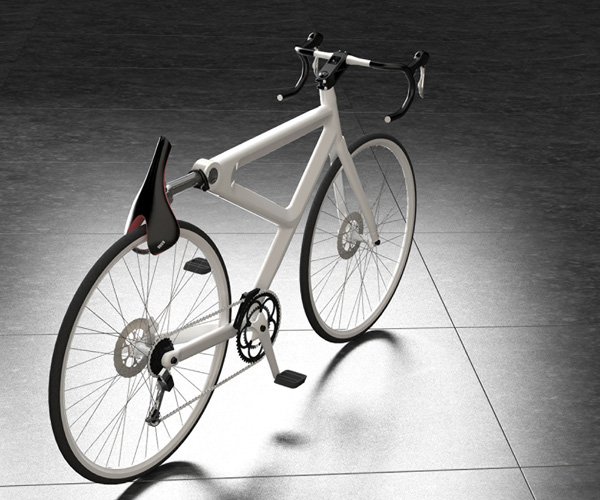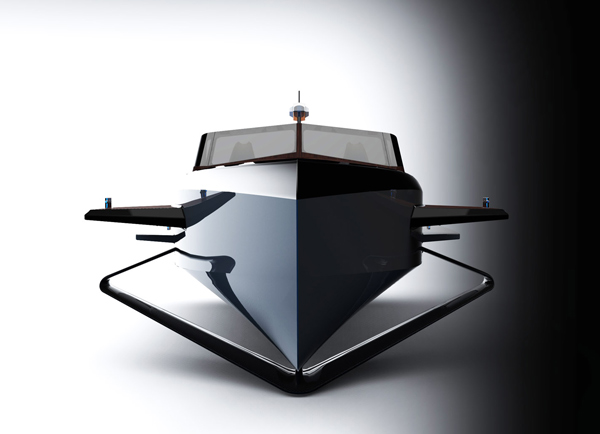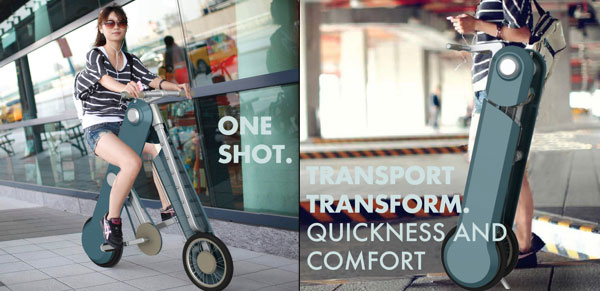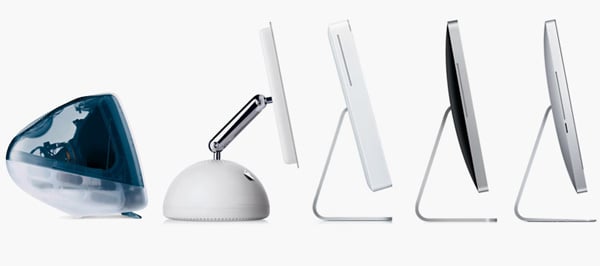Yanko Design - Form Beyond Function |  |
- Best of Transportation Design in 2013
- The Air Walk
- Candid With Ken Koo – Why is form and function important to design?
| Best of Transportation Design in 2013 Posted: 26 Dec 2013 06:18 AM PST It's that time of the year when we sit back, relax and reflect on the year gone by. 2014 is fast approaching and here is a quick recap of the Ten Most Amazing Designs in the field of Transportation. Interesting to note that cars didn't quite make the cut, instead bikes, alternate modes and bicycles made a splash. Free market is such a fun space; you never know how people will react and what catches their fancy! Stay tuned for more creative insights tomorrow. Saddle Lock – Bicycle Lock by Lee Sang Hwa, Kim Jin Ho & Yeo Min Gu
Bugatti Gangloff – Concept Car by Paweł Czyżewski
Honda Type E – Concept Vehicle by Michael Brandt
Quick Stand & Lock For Bicycle by Soohwan Kim, Junho Yoon, Dohoon Lee & Hyojin Park
BMW Rapp – 100th Anniversary Concept by Dejan Hristov
Spearhead Yacht by Alexander Shevchenko
Audi Motorcycle – Ducati by Thibault Devauze
7-miles Robotic Orthosis by Josef Ludvik Bohm
nCycle by Hussain Almossawi & Marin Myftiu
One Shot – Folding Bike by Valentina Vecchia
STP – Step Scooter by Benk Koros
National Geographic 2035 ZAIRE Concept Car by Dong Man Joo
XGV-A “Orbiter” – Space Launcher by Oscar Viñals
Audi Nexus – Concept Vehicle by Marco Wilhelm
Zapfina – Concept Bicycle by JiaLing Hu
- Related posts:
|
| Posted: 26 Dec 2013 03:12 AM PST Air Rope is an inflatable rescue tunnel that can be deployed during flood situations. It is a safer option to the rope pulley system and is easier to use. Instead of braving the torrent and crossing the river to secure a pulley system, the inflatable air walk is used. Air is pumped into a doughnut-shaped fabric tube that extends into a round tunnel.
Air Rope is a 2013 red dot award: design concept winner. Designers: Lee Yong Ho, Lee Jee Won & Lee Juan
- Related posts: |
| Candid With Ken Koo – Why is form and function important to design? Posted: 26 Dec 2013 12:00 AM PST Greetings everyone! Trust you had a great party these past two days. Team YD wishes all of you a very Merry Christmas and a great New Year. First off, thank you very much for embracing Ken's last chit-chat with me as a special treat. You guys loved him as much as I do! So here is another session of getting Candid With Ken Koo where he and I discuss why is form and function important to design.
Me:Ken, here we go… why is form and function important to design? Can we apply the theory to business as well? Ken:Because if form is not a result of function, then form is merely superfluous, and has no meaning; it can be anything. If we were to draw the similarities in business, we have to look at multiple scenarios since a business is a much more complicated situation and relationship…. Let’s pick one angle; let us think about form as what a business actually does, in operations or in fulfilling a customer’s needs. And let us think of function as what the customer actually wants or demand. Surely, the business needs to establish operations and produce services and goods that meet what the customer wants. And from another angle, if form is perhaps the location of business and function is what the business does. A warehousing business needs the warehouse to be designed in an effective manner to enable efficient workflow, thereby achieving the lowest cost of operations. While a restaurant has to be designed to maximize seating or to create the appropriate atmosphere to generate sufficient business revenue or to deliver the right experience… Me:So how will you equate this phrase in the business of design angle, are there any guidelines for that, what is your perspective? Ken:What do you mean by “business of design”? Me:When you run a design studio? Ken:This is very very broad my dear! Me:or a design house, how do you market or position yourself? hmm okie, let's narrow it down from a design house angle… or take your pick… Ken:If the studio is to innovate for a customer or design a solution or new product .. then that is the function … Me:Then what is the form? Ken:The form can be how the studio is being organized… Me:hmm okie… Ken:There are many models … some studios served many the brands it is named … like Philips Design or BMW Designworks who served 50% BMW … then such studios should be more integrated with the business it serves primarily … understanding the culture and have job rotation … etc But some studios are collective in structure … because they propose a highly multi-disciplinary approach and draw on a big pool of different talents … some in crowd source solutions … lol, I am not sure if I am answering the question! Me:Yes you are! Talk more about crowdfunding … is there scope for form beyond function or does everything have to be structured, considering the fact that it is an online medium and money is involved and yet internet is a volatile place Ken:I cannot understand why it is related to crowd funding … Anyway, form follows function does mean it must be structured and it is rigid … It is meant to have a reason, to support the function … Me:Hmm the reason why I bring is crowdfunding is that a lot of young designers are using that as a medium to raise funds. This is why it becomes a part of their business model. So on one hand you have your design and the other you are trying to get a market and funds for it. Traditionally you had a client in your hands and then offered a design solution. But with crowd funding it’s the other way around. Like how books are being written and music being supported these days…. Makes sense? Ken:hmm, I think in the past, the client is the middleman. The client is the brand, the producer … but now, crowdfunding removes the client and directly approach the end buyers … Me: I guess this is why its more important now, more than ever, to have form and function integrated into the business of design. Structure will bring it the freedom, accountability and responsibility to perform efficiently. Ken Koo is Asia President for the red dot design award and is responsible for the third installation of the red dot design award focusing on design concepts titled the red dot award: design concept He is also the initiator of MAAD, the market of artists and designers at the red dot design museum in Singapore. - Related posts:
|
| You are subscribed to email updates from Yanko Design To stop receiving these emails, you may unsubscribe now. | Email delivery powered by Google |
| Google Inc., 20 West Kinzie, Chicago IL USA 60610 | |




























No comments:
Post a Comment